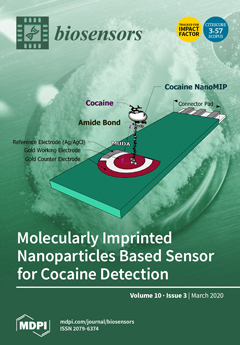Open AccessArticle
A Disposable Passive Microfluidic Device for Cell Culturing
by
Francesco Guzzi, Patrizio Candeloro, Maria Laura Coluccio, Costanza Maria Cristiani, Elvira Immacolata Parrotta, Luana Scaramuzzino, Stefania Scalise, Elisabetta Dattola, Maria Antonia D’Attimo, Giovanni Cuda, Ernesto Lamanna, Lucia Carmela Passacatini, Ennio Carbone, Ulrich Krühne, Enzo Di Fabrizio and Gerardo Perozziello
Cited by 12 | Viewed by 5070
Abstract
In this work, a disposable passive microfluidic device for cell culturing that does not require any additional/external pressure sources is introduced. By regulating the height of fluidic columns and the aperture and closure of the source wells, the device can provide different media
[...] Read more.
In this work, a disposable passive microfluidic device for cell culturing that does not require any additional/external pressure sources is introduced. By regulating the height of fluidic columns and the aperture and closure of the source wells, the device can provide different media and/or drug flows, thereby allowing different flow patterns with respect to time. The device is made of two Polymethylmethacrylate (PMMA) layers fabricated by micro-milling and solvent assisted bonding and allows us to ensure a flow rate of 18.6 μL/h - 7%/day, due to a decrease of the fluid height while the liquid is driven from the reservoirs into the channels. Simulations and experiments were conducted to characterize flows and diffusion in the culture chamber. Melanoma tumor cells were used to test the device and carry out cell culturing experiments for 48 h. Moreover, HeLa, Jurkat, A549 and HEK293T cell lines were cultivated successfully inside the microfluidic device for 72 h.
Full article
►▼
Show Figures






